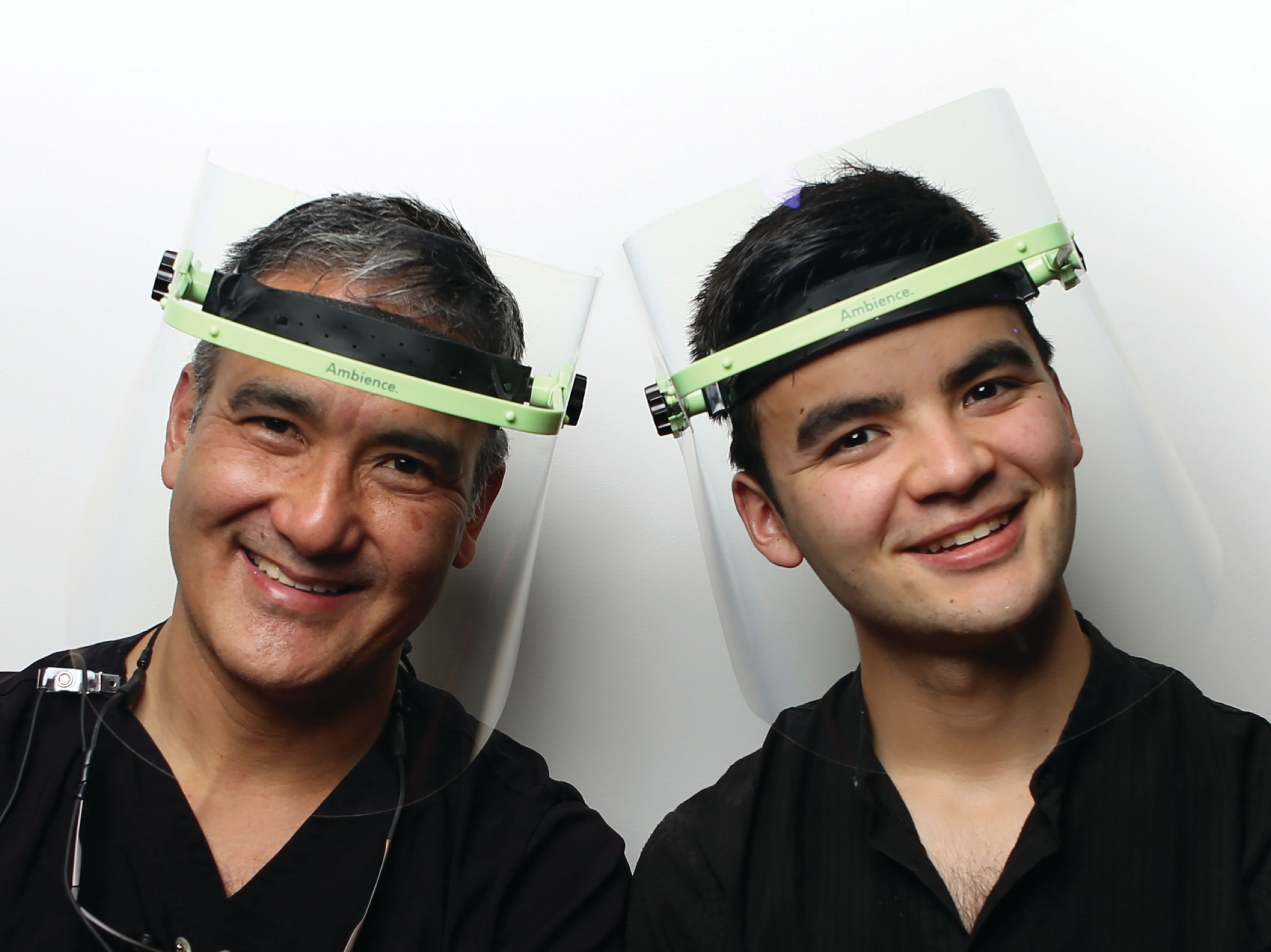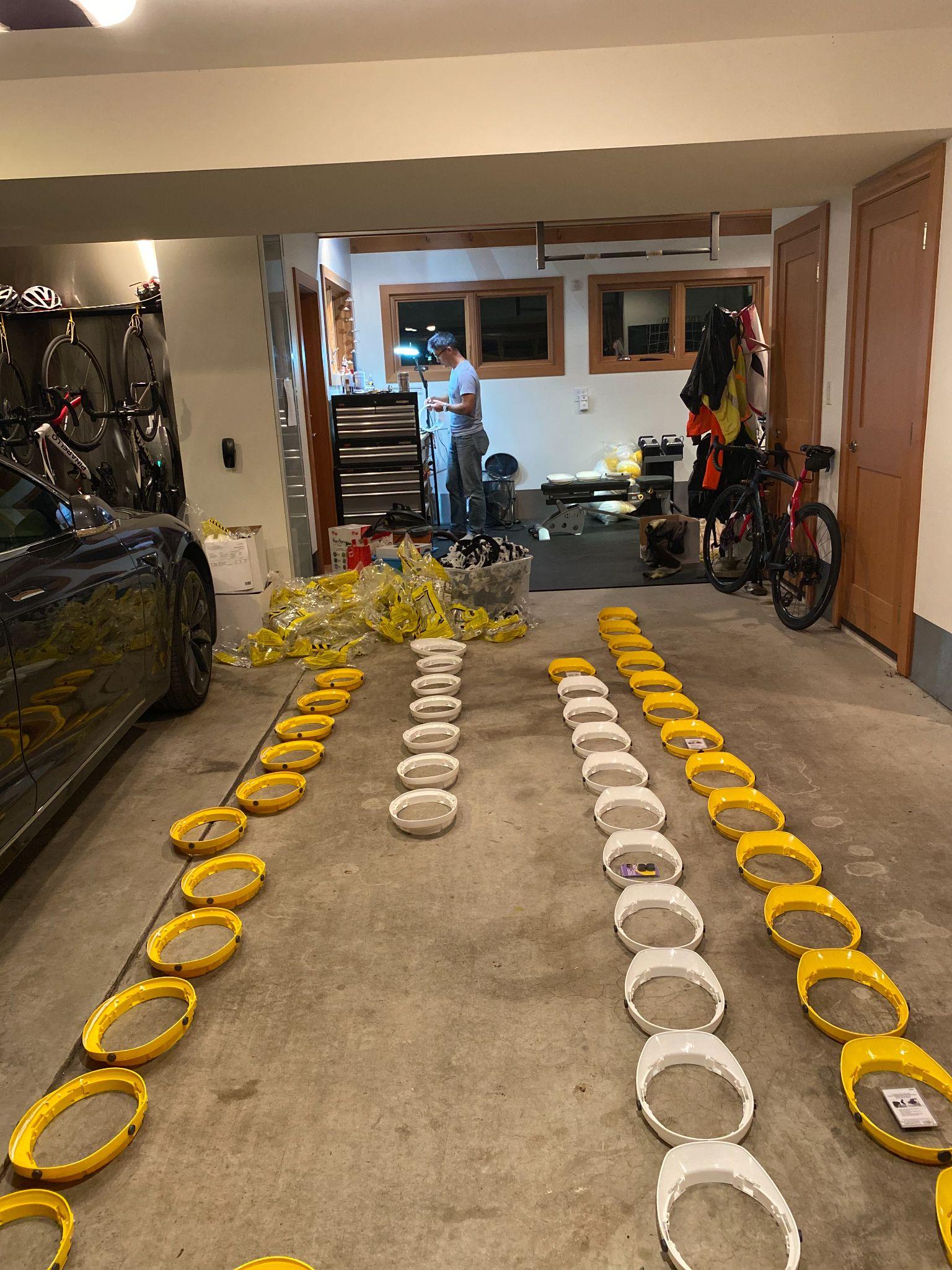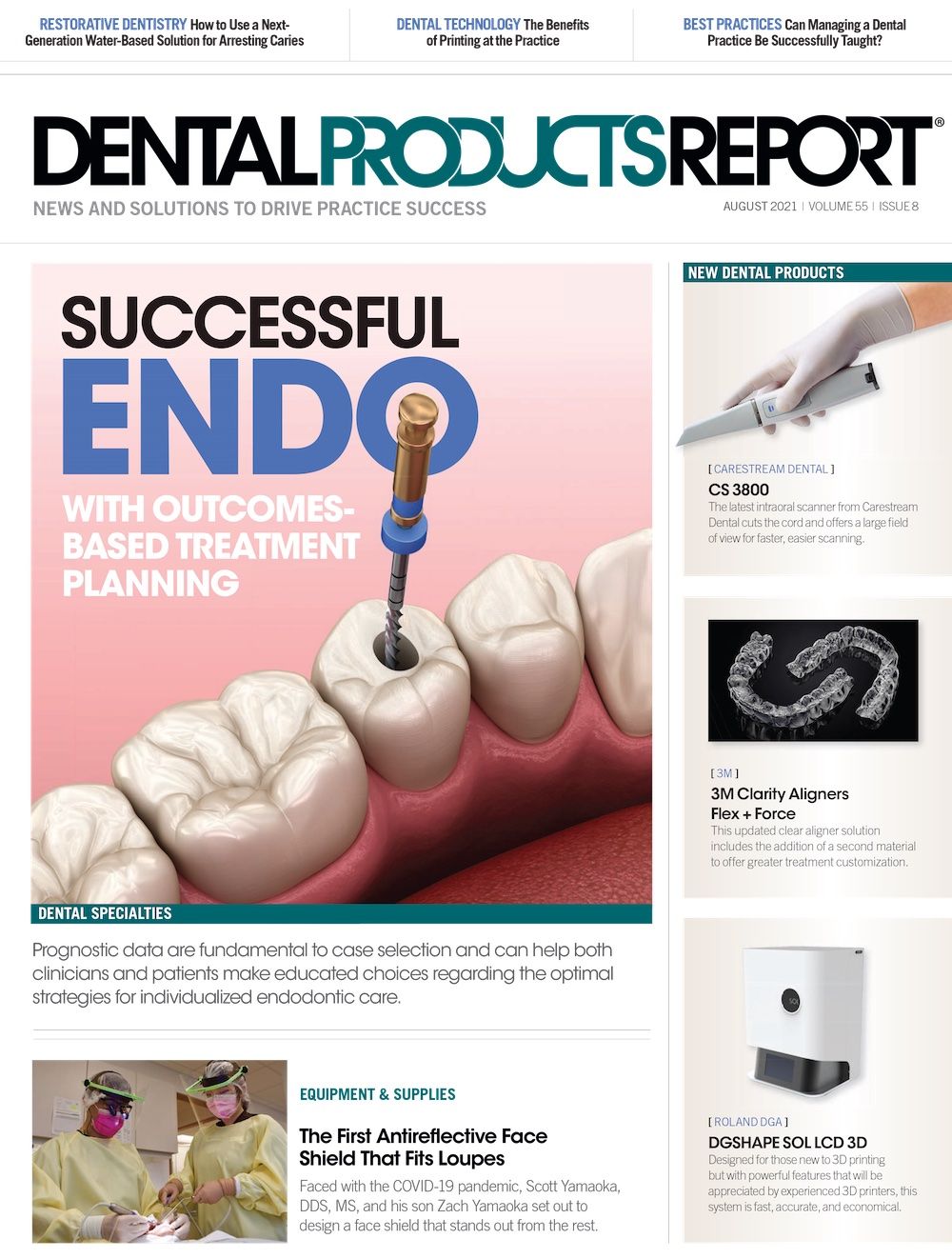When the COVID-19 pandemic began, there was an increased urgency in the manufacturing of personal protective equipment (PPE). Included in this PPE were face shields for dental practices. After reopening his Vancouver, Canada practice, periodontist Scott Yamaoka, DDS, MS, needed a high-quality face shield that could fit his loupes.
“When I looked to see what was available on the market, there were face shields…used for welding purposes or…for protection from using a chainsaw,” Dr Yamaoka says, “nothing, really, that met the needs from a dental perspective.”
Two issues he focused on were optical clarity and room for standardized loupes. Inspired by a YouTube video in which someone had created a face shield from acetate, a baseball cap, and duct tape, Dr Yamaoka decided he needed to make a face shield himself.
Dr Yamaoka created the first prototype of the Ambience PPE face shield by taking a construction helmet and cutting the top off for improved ventilation. He used magnets to attach an acetate sheet, typically used for school projectors, to the front of the helmet. Dr Yamaoka made more than 70 face shields in his garage, and then sent them to colleagues for feedback. Based on the initial positive response, Dr Yamaoka enlisted the help of his son Zach Yamaoka, who had previously worked at Dyson as a design engineer.
“The users of the first prototype really liked the construction helmet head suspension because it was different from their shields that had an elastic band or thin plastic head support,” Zach Yamaoka says.
“It was something Dad stumbled into, and turned out to be exactly what you want. The full head suspension doesn’t squeeze the head or shift around. This is very important in dentistry as you’re doing these hour-long procedures. Not having comfortable head suspensions was one of the many obvious shortcomings of shields at the time. They were simply not designed with the needs of dental practitioners in mind.”
“Zach took the first prototype, gave it some thought, and took it to the next level of things.” Dr Yamaoka says. “What I was doing was just MacGyvering and making it work as best I could, which did work out reasonably well, but Zach certainly [took] it to the next level.”
The Next Level
“The first prototype worked well. I really liked how my dad made it. It’s basically called ‘bottom-up’ innovation. When you do that, you just grab resources that are available directly,” Zach Yamaoka notes. “You solve problems that actually exist, very concrete problems, …[such as that the] loupes and lights can’t fit, and the lack of clarity, and that the head harness is not very comfortable.”
According to Zach Yamaoka there was always a desire to make things better, to improve on what already existed in order to suit the needs of clinicians. “There is no shield like the final version of the Loupe Shield, and hopefully it becomes the new standard,” Zach Yamaoka says. “It’s just how dental face shields should be.”
The father and son went through approximately 58 prototypes of the face shield, fine-tuning and improving on each model.
“Around the 40th prototype, we were ready to go to market. Then, I got a paper cut, and I noticed that the blood was seeping into the 3D printed plastic. This was a big concern for us,” Zach says. “We had planned to 3D print the face shield, but realized we would need to injection mold the parts so they could be sanitized.
“We had to go back to the drawing board and adjust the design. This turned out to be a blessing. It gave us time to identify an antireflective technology that has become a real game changer. We also incorporated more user feedback, adjusting the shape of the rim on the shield to make it stiffer and less bulky. Throughout the entire process we were sending prototypes to dentists and hygienists. By the time we got to the 58th prototype, we had a high level of confidence that clinicians were going to like the shield, because they helped design it!”
Each hurdle was an opportunity for improvement. The signature green color of the rim didn’t come until later in the process. There were also medical device regulatory processes that Zach Yamaoka had never experienced in his consumer-focused history at Dyson.
“I ended up finding this book called Medical Device Design by Peter J. Ogrodnik,” Zach says. “It was the best thing. There are not a lot of resources online for medical design, so that book became kind of the bible, and really helped me with getting all the regulatory documents in place.”
Face Shield Features
Before COVID-19, shields were primarily used in industries other than dentistry. Designed for different applications, they do not meet a dentist’s needs—namely optical clarity, fitting loupes and lights, easy disinfection, and personal comfort. One standout feature of this shield, the antireflective coating, was a design decision that came later in the process.
“Manufacturers are…using a kind of polycarbonate plastic, which does have some benefits in terms of being more impact resistant. But in dentistry, what you’re trying to protect against isn’t flying nails, it’s splatter,” Zach Yamaoka says. “The functional requirements changed, which allowed [for] a lightweight plastic that has the antireflective coating. The shield is something that you’re going to have in front of your eyes for multiple hours a day, multiple days a week. Dentists are willing to pay more to have this antireflective coating, whereas a lot of other industries are just not willing to pay as much to have that optical clarity.”
Before they completed their product design, there wasn’t a face shield available that contained these features. Aside from the optical clarity, loupe accommodation was a feature that Dr Yamaoka found notable.
“Everybody has a different set of loupes, and some of them are longer lenses and some of them shorter lenses,” he says. “Zach’s idea for how to accommodate that makes it a product that is quite widely acceptable and versatile from a practical perspective of working with it.”
The slot that accommodates loupes is able to slide back and forth for optimal customization. This feature is accompanied by a full head suspension to help create a more comfortable experience for dentists and hygienists.
Dr. Troy Martin, DDS, who used the very first Loupe shield prototype and now practices with the final version, is a proponent of the various features of the face shield.
“Compared to the first prototype and other face shields I used, The final loupe shield is superior in clarity and lack of reflection. It’s easier to clean and maintains its clarity over time. The shield is so comfortable while wearing it and the clarity of the plastic is such that I forget that I am wearing it. I have actually thrown away all the shields we used previously and only have the Ambience Loupe Shield in my practice now. All of my team use them and no one would consider returning to any of the previous shields we had used.”
Anyone Can Innovate
Without Dr Yamaoka’s perspective as a dentist and his son’s skill as a design engineer, the features and benefits of the face shield would not exist. Zach Yamaoka emphasizes that any idea can be put into motion with enough willingness and persistence.
“The best thing is what my dad did, when you don’t need to open a 3D CAD/CAM modeling software; you just need to very quickly test if [something’s] going to work,” Zach Yamaoka says. “If I was going to make a new type of scaler, I would use an existing scaler and then I would bend it to achieve a new shape. I would build from existing things, making small modifications to create a prototype. In my dad’s case, he used that existing helmet to make the first shield prototype.”
Turning an idea into something tangible is a key step in the development of a product.
“Being able to create a rough prototype is also a great test of technology readiness,” Zach Yamaoka points out. “If you are unable to make a quick simple prototype, it may be because the technology is just not there yet, [and] maybe there is a simpler solution to your problem.”
Dr Yamaoka remarks that having someone to consult on design was a great boon when moving forward in prototyping.
“As dentists we have a lot of great ideas, but we’re so busy with learning our own skill sets, we’re generally not that computer savvy,” Dr Yamaoka says. “Some of the younger dentists are, because of the CAD/CAM utilization for crown manufacturing…or CAD/CAM impressions, but to take it to an engineering perspective, you’d probably have to get in contact with a design engineer to make a prototype.”
Zach Yamaoka credits different manufacturing and e-commerce tools such as 3D printers, Alibaba, and Shopify for making it easier to mass manufacture products such as theirs. It’s all about being aware of the right resources in order to innovate.
“A year ago, I would have had no idea how to do any of what I’ve achieved over the past year. There have been a lot of great tools developed by others that made it all possible,” Zach Yamaoka says.




